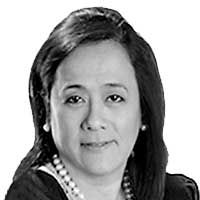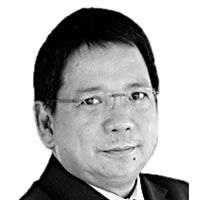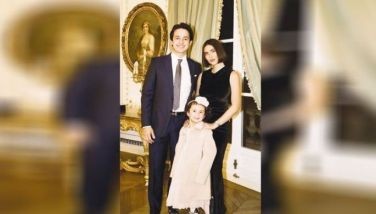EDSA

When one mentions EDSA, motorists and commuters alike will almost certainly feel that familiar sense of dread– dread of the legendary traffic we endure long before we actually reach Metro Manila’s main thoroughfare. We feel it on any given day, including Sundays, and experience it before, during and after we’re actually plying the busy road.
And yet, the 23-kilometer highway also gives us access to almost anywhere. Pass by EDSA, and you can get to any part of the metropolis – north, south, east, west or beyond.
EDSA and its role in our lives – or these two extreme experiences of being stuck and being able to move forward – are the perfect metaphor to describe what the historic EDSA Revolution of Feb. 25, 1986 brought to our country.
It brought us hope – such fervent hope – and the promise of a better tomorrow.
I am reminded of what Charles Dickens said in “A Tale of Two Cities:”
“It was the best of times, it was the worst of times, it was the age of wisdom, it was the age of foolishness, it was the epoch of belief, it was the epoch of incredulity, it was the season of light, it was the season of darkness, it was the spring of hope, it was the winter of despair.”
Thirty-nine years later, I still believe, as I did then, that EDSA held the promise of a better tomorrow. It was a moment in our history that was necessary. It had to happen because the two-decade dictatorship of Ferdinand Marcos Sr., which set our country and economy back – to this day – had to end. EDSA was the change our country needed during that tumultuous period in our history.
But what happened after was a failure in governance, a lack of follow-through and a typical Filipino trait: ningas-kugon, or fleeting enthusiasm.
It left us a new constitution – the 1987 Constitution – which allowed corrupt officials to return to power through a multi-party system.
It didn’t help that those who ruled after EDSA became the ogres they initially tried to slay, although sadly, this is typical in countries that overthrew dictators.
Take Libya, for example. In 2011, the country overthrew its long-time dictator, Muammar Gaddafi, but failed to transition into a better nation. Today, it remains plagued by civil war as different groups continue to fight for power.
Egypt, too, ousted Hosni Mubarak in 2011, but today, the country is considered the second most vulnerable to a debt crisis, and hopes for democratic change remain elusive under the El-Sisi regime and its new brand of authoritarianism.
Yemen ousted its dictator, Ali Abdullah Saleh, in 2011, but to this day, the country continues to face multiple crises, including the Houthi rebellion, which remains a threat to lasting peace.
If we compare ourselves to these countries, we can surely heave a sigh of relief – maybe even pop the champagne bottles.
After all, we have reasons to do so – there are no gunfights or blood on the streets, no refugee camps and no violent disruptions in our daily lives.
Deep state
But if we look closer, we might actually have it worse, to a certain extent.
This is because what exists in our country today is a deep state of sorts – a parallel, elite-driven secret network that seems to manipulate policy to favor the powerful few and maintain the status quo that protects them.
The result is the stark and widening income inequality in our country today.
How did we get here?
There are many reasons.
First, we must look at how Corazon Aquino and her successors failed to do enough to protect the gains of EDSA. It was an opportunity to create stronger institutions – from justice to education to health – to build a more inclusive economy and lift millions out of poverty.
But incompetence, in-fighting during the Aquino administration, the power struggles within the Yellow Camp, the disappointment and disillusionment that followed and the failed coups d’état all pushed our country backward.
The people, too, forgot that the revolution was not just a three-day affair – it was an ongoing battle.
Thus, in the years that followed, it was more of the same – an elite-driven economy that isolated the poorest of the poor.
As such, the poverty incidence in the Philippines – or the proportion of Filipinos whose per capita income cannot sufficiently meet the individual basic food and non-food needs – was recorded at 18.1 percent in 2021 from 16.7 percent in 2018. This translates to around 19.99 million Filipinos living below the poverty threshold of about P12,030 per month for a family of five, according to the Philippine Statistics Authority (PSA).
And now, here we are again, back to another Marcos presidency.
As I wrote in 2023 for PhilStar Life:
“With the EDSA Revolution in the middle of our long, storied journey, the Philippines is in many ways still in limbo. We are in that spring of hope and yet, also in the winter of despair.
“In many ways, it’s exactly like EDSA, the avenue – a few good lanes but riddled with countless potholes and all.”
And may I add – with a bus lane for the masses that is constantly abused by the entitled and the elite, as with many things in our country today.
* * *
Email: eyesgonzales@gmail.com. Follow her on Twitter @eyesgonzales. Column archives at EyesWideOpen on FB.
- Latest
- Trending
























